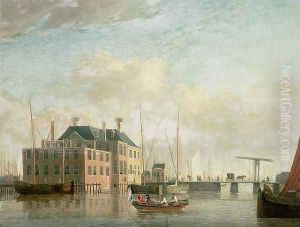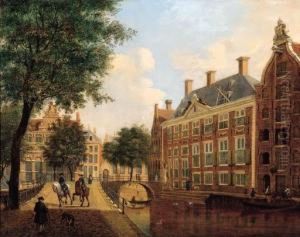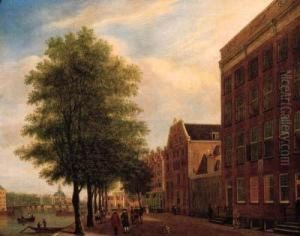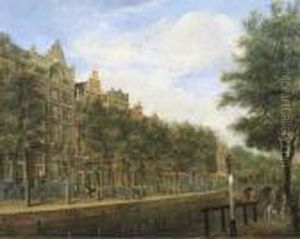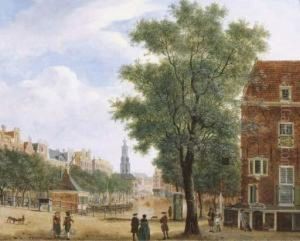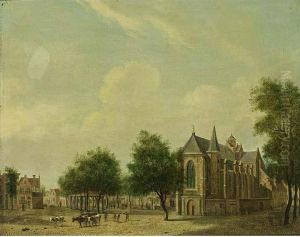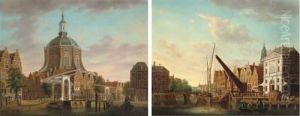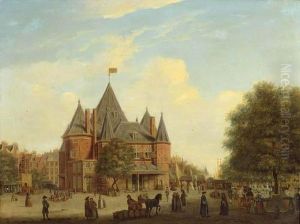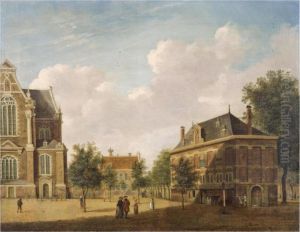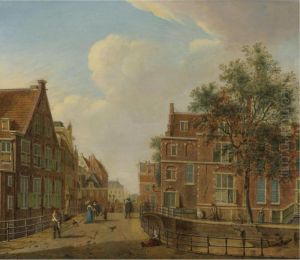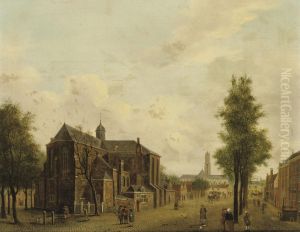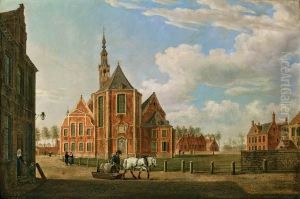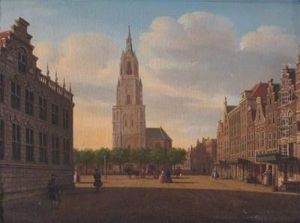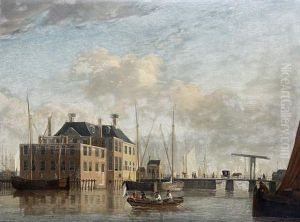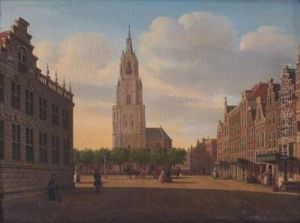Jan Ten Compe or Kompe Paintings
Jan ten Compe, also known as Jan ten Kompe, was a Dutch artist renowned for his exquisite landscape and cityscape paintings, particularly focusing on views of Amsterdam. Born in 1713 in Amsterdam, Netherlands, he grew up in an era when Dutch art was transitioning from the Golden Age's grandeur to a more nuanced appreciation of daily life and its surroundings. Ten Compe's work reflects this shift, capturing the serene beauty of Dutch cities and their architecture with remarkable detail and a masterful use of light.
His early life is somewhat obscure, but it is known that he was deeply influenced by the works of earlier Dutch masters, such as Rembrandt and Vermeer, which is evident in his meticulous attention to light and shadow. Ten Compe initially worked on decorative wallpapers before focusing entirely on painting. His transition to canvas allowed him to fully explore and express his fascination with urban landscapes, a subject he would remain devoted to throughout his career.
Ten Compe's paintings are characterized by their precise detail, vibrant colors, and the ability to convey the texture of the urban environment. He had a particular talent for depicting water, whether it was the calm canals of Amsterdam or the bustling ports, imbuing his scenes with a sense of tranquility and timelessness. His works served as valuable historical records, offering insights into the architectural and urban development of the Netherlands in the 18th century.
Despite his contribution to Dutch art, Jan ten Compe did not gain significant fame during his lifetime, and it was only posthumously that his work received the recognition it deserved. Today, his paintings are considered important examples of 18th-century Dutch cityscapes, admired for their technical skill and aesthetic appeal.
Jan ten Compe passed away in 1761 in his hometown of Amsterdam. His legacy lives on through his paintings, which continue to be studied and appreciated for their historical value and artistic beauty. They are housed in various museums and collections around the world, serving as a testament to the enduring appeal of Dutch urban landscape painting.
